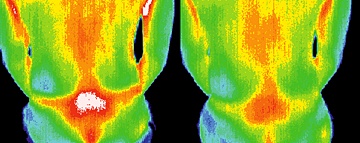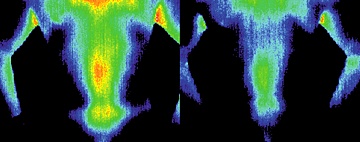How many kinds of lower back pain are there? This was the question I had several years ago when asked for advice by one of my very old and dear friends, a world-renowned, prominent surgeon, Professor P.C.
Modern scientific research in Chinese medicine still is in its infancy. It is natural to follow the research protocol utilized in traditional Western medicine. The protocol dictates a fixed set of the same acupoints for everyone with lower back pain. Every patient with lower back pain must be treated exactly the same way. On the other hand, Chinese medicine views every patient differently with a different history, because every back pain is different; different sets of acupoints should be selected for different patients with different kinds of lower back pain. In fact, different sets of acupoints should be selected for the same patient as their conditions change. Acupuncture is a personalized, customized treatment which requires a protocol that has yet to be evolved for future research in medicine.
So, back to my advice: I suggested each patient have infrared pictures taken before and after treatment to show different kinds of lower back pain. Then, the selection of acupoints would not be subjective and could, in principle, be determined rationally by looking at various kinds of temperature distribution of the lower back of each patient. Each patient would be treated optimally for the best results using a specially selected set of acupoints.
Every acupuncturist knows from experience that every back pain is slightly different. To substantiate this empirical experience - that every back pain is qualitatively and quantitatively different - we need a modern detection instrument, such as an infrared imaging system. Below, I present a set of infrared pictures of five patients with lower back pain. The image on the left of each example was taken before treatment started. They had some similarity, but were obviously different for all five patients. The images on the right were taken after healing by external qi, which took about 10 minutes per patient.
The color code for the infrared images is as follows: white is the hottest, then red, yellow, green and blue; the coldest is black. The before and after images are presented in the same color scale, which means the same color represents the same numerical temperature for both images. The hot temperature of the pain area was considerably cooled down from the healing practice to a more normal temperature of the surface of the body. The normal fluctuation of surface body temperature is from 0.1 C to 0.25 C, while the difference of the maximum temperature was typically 1 C or more, or four standard deviations away from the normal temperature.





Note: Although we used external qi to help patients relieve pain, it is expected that acupuncture would be equally effective.
It is my conviction that, eventually, Chinese medicine should have the same academic status as Western medicine. Therefore, it is necessary to present our results to the community with the most rigorous quantitative discipline for critique and approval. I presented the numerical analysis (according to symmetry principles of quantum physics) of lower back pain of the above images for the first time in an international conference organized by the World Chinese Physicist Association in June 2006. This association has six Nobel laureates of Chinese descent as members. The topic received such an enormous and enthusiastic response that we had to organize an additional two-day satellite meeting, "Experimental Basis on the Study of Acupuncture," which was attended by five presidents: the president of Taiwan National University, the president and two vice presidents of the only Chinese medicine university in Taiwan, and the vice president of Fudan University, Shanghai. In July 2006, I organized another conference on the topic. Please see the Web site (www.qluni.org) for content on the various talks on very high research activities.
I also invited my old and dear friend, Professor Leung, to give a talk at the satellite meeting. He came over from Hong Kong and gave a short summary of research activities in Hong Kong; activities which I believe now have funding of more than $100 million Hong Kong dollars. At the end, he said that in order to have their results published in mainstream medical journals, these research projects all required a control group for comparison. So, sham needles were used for the control group. But patients in the control group knew that the needles were sham - if not immediately, then definitely in the second session. Thus, the current Western protocol for testing drugs was totally inappropriate, if not outright ridiculous, for acupuncture.
Professor Leung said that being a theoretical physicist, I had a duty to invent a new protocol for research in acupuncture. My response was that the current protocol comes from classical physics, wherein every person is regarded as the same and results are deterministic. A new protocol must come from quantum physics, as discussed extensively in my book, Biophysics Basis for Acupuncture and Health. A concrete proposal with emerging new protocols for testing the efficacy of Chinese medicine will come from an understanding of the synthesis of quantum physics and Chinese medicine. My suggestions for such a protocol will be reported in my next column.
Click here for previous articles by Yin Lo, PhD.




